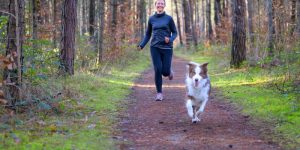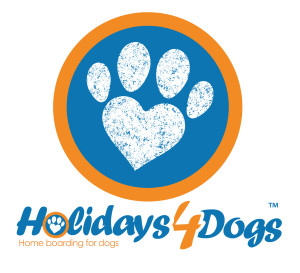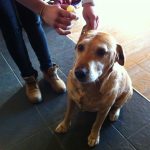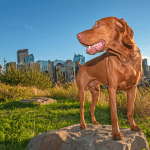Dog Paw Care.
Dogs’ paws are sometimes forgotten about when it comes to caring for their physical well-being. This is unfortunate because when you think about it, the dog’s paws are a very important part of their anatomy, which can affect their general health. This Holidays4Dogs article will provide some tips for owners and carers alike in respect of looking after dog paws and feet.
Handling.
It’s always a good idea to get your new puppy, or dog, used to having his paws handled as this will help with general dog paw care in the future. Try to make this part of your routine by teaching him in a positive way, to accept having his paws touched daily. To do this, simply begin by stroking the dog’s paws and foot area, while giving lots of verbal praise.
Clicker training works very well for helping your dog to be comfortable having his, or her, paws handled. Being able to handle your dog’s paws, without him objecting, will make paw and claw care so much easier.
Claws.
A dog’s nails should sit just above the ground when the dog is standing. If your dog’s nails making a clicking sound on hard surfaces, they are probably too long. If you spend some time walking your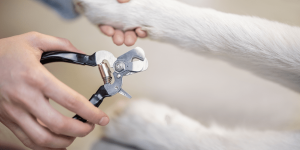 dog on pavements this will help to keep the nails worn down a little bit.
dog on pavements this will help to keep the nails worn down a little bit.
However, if your dog has dew claws situated on the inside top of the foot, you will need to keep a particular eye on these, as they won’t be worn down by walking alone.
If you do need to cut your dogs claws, as part of dog paw care – remember, as the nail grows, so does the ‘quick’.
This is the part of the claw that supplies blood vessels and nerves. It is easily visible in pale coloured nails, making them easier to trim to just below the level of the visible quick.
If you are not confident about cutting your dog’s nails, a dog groomer or vet, will do this for you for a nominal fee.
Fur.
Keep an eye on the fur around the toes of long-haired dogs. Checking in between the toes should become part of your dog paw care routine. Make sure the dog has not picked up burrs, or stones, which can cause minor abrasion, or irritation to paws. It is often a good idea to periodically trim the hair from between the toes, especially during the winter months.
Terrain.
Terrain and weather conditions can have an impact on your dog’s pads and paws. During the winter, when the ground is frozen, a dog’s paws can become cracked and sore. Therefore, is important to pay particular attention to your dog’s paw care during the colder months of the year.
Similarly, during the summer when the ground is dry and solid, keep an eye on the bottom of the pads for signs of abrasions or soreness. Hot pavements and tarmac can burn delicate pads. Avoid playing ball with your dog on hard surfaces such as concrete, or tarmac, as this can cause painful blisters on pads.
Fitness and exercise. 
Puppies, especially large breeds, should not be over exercised since this can impact on growing bones. This is also true when it comes to dog paw care. Dog paws are sensitive, but puppy paws are particularly delicate.
Build up exercise gently and gradually expose the puppy to different surfaces and terrains.
Jogging, running, or cycling with your dog can put excessive strain on paws, feet and legs.
Therefore, be aware not to push your dog too hard and build exercise up gradually. Swimming is great exercise for dogs and they have webbed feet designed for swimming.
In addition, it is also important to make sure your dog does not become overweight. Obesity can put greater strain on a dog’s limbs, feet and pads.
Conclusion.
It is easy to overlook the care of dog’s paws. If the dog is limping, or walking oddly (from overly long nails for example), this can have an effect on the rest of the dog’s limbs, back, or neck. Check pads, paws and toes straight away if your dog is limping.
If your dog regularly licks his paws and between the pads, it may signal there is a problem. Allergens, or irritants such as yeast infection, for example, can result in paw licking. If you suspect this might be the case, consult your veterinary surgeon.

